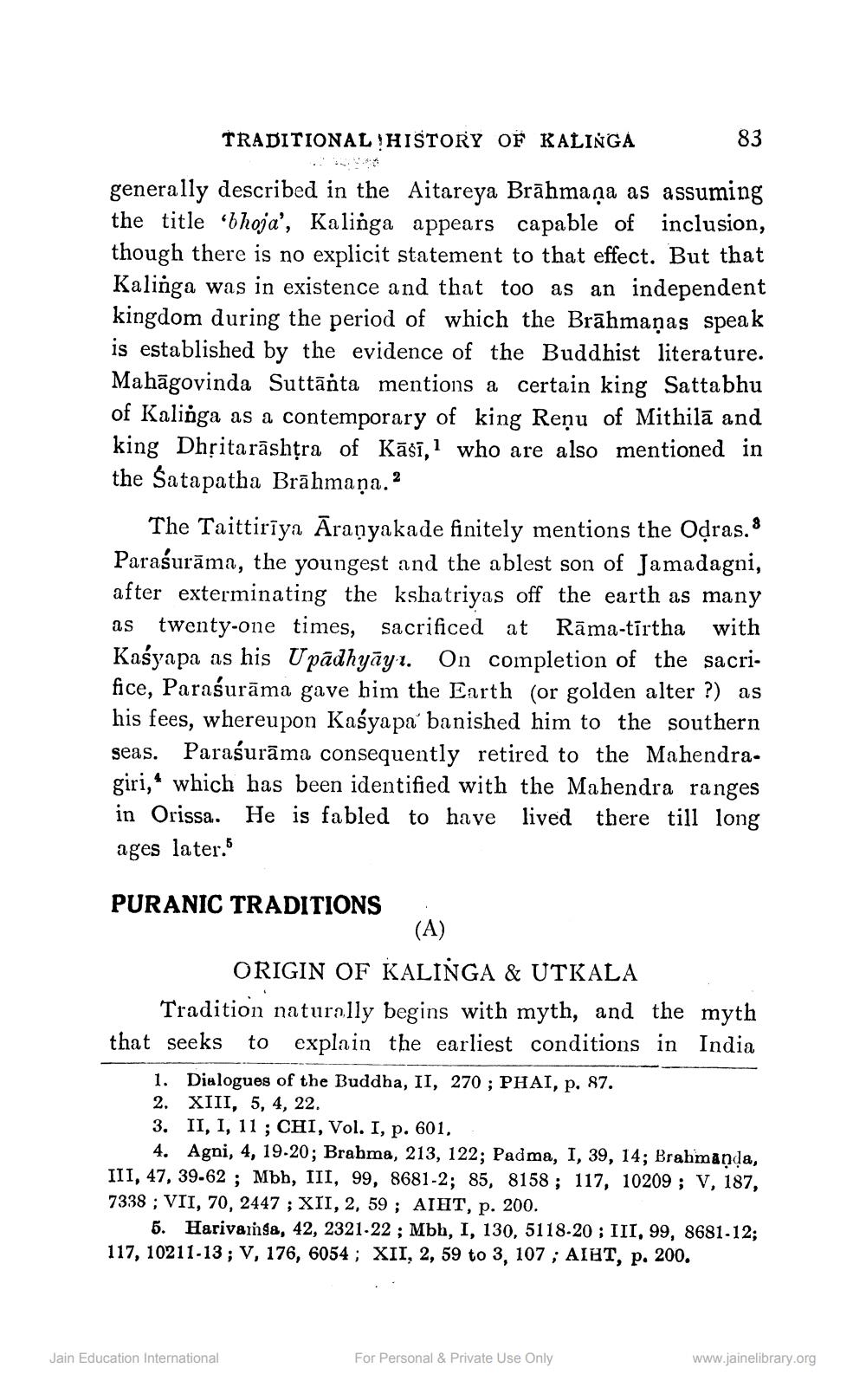________________
TRADITIONAL HISTORY OF KALINGA
generally described in the Aitareya Brāhmaṇa as assuming the title “bhoja’, Kalinga appears capable of inclusion, though there is no explicit statement to that effect. But that Kalinga was in existence and that too as an independent kingdom during the period of which the Brāhmaṇas speak is established by the evidence of the Buddhist literature. Mahāgovinda Suttānta mentions a certain king Sattabhu of Kalinga as a contemporary of king Reņu of Mithilā and king Dhțitarāshțra of Kāšī,l who are also mentioned in the Satapatha Brāhmaṇa.?
The Taittiriya Araṇyakade finitely mentions the Odras. 8 Paraśurāma, the youngest and the ablest son of Jamadagni, after exterminating the kshatriyas off the earth as many as twenty-one times, sacrificed at Rāma-tīrtha with Kaśyapa as his Upadhyāyı. On completion of the sacrifice, Parasurāma gave him the Earth (or golden alter ?) as his fees, whereupon Kaśyapa banished him to the southern seas. Paraśurāma consequently retired to the Mahendragiri," which has been identified with the Mahendra ranges in Orissa. He is fabled to have lived there till long ages later.
PURANIC TRADITIONS
(A) ORIGIN OF KALINGA & UTKALA Tradition naturally begins with myth, and the myth that seeks to explain the earliest conditions in India
1. Dialogues of the Buddha, II, 270 ; PHAI, p. 87. 2. XIII, 5, 4, 22. 3. II, I, 11 ; CHI, Vol. I, p. 601,
4. Agni, 4, 19-20; Brahma, 213, 122; Padma, I, 39, 14; Brahmanda, III, 47, 39-62 ; Mbh, III, 99, 8681-2; 85, 8158; 117, 10209 ; V, 187, 7338 ; VII, 70, 2447 ; XII, 2, 59; AIHT, p. 200.
5. Harivanga, 42, 2321-22 ; Mbh, I, 130, 5118-20 ; III, 99, 8681-12; 117, 10211-13; V, 176, 6054; XII, 2, 59 to 3, 107 ; AIHT, p. 200.
Jain Education International
For Personal & Private Use Only
www.jainelibrary.org




